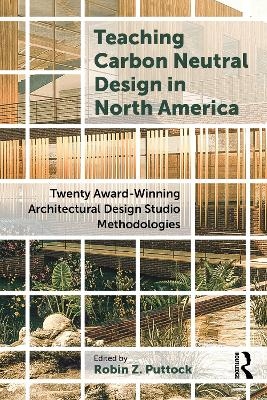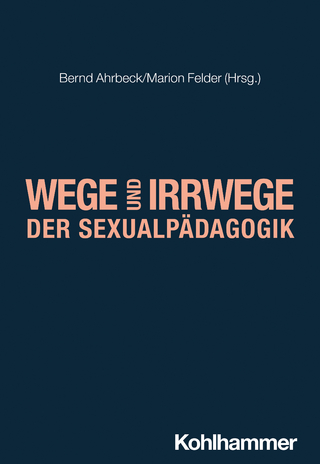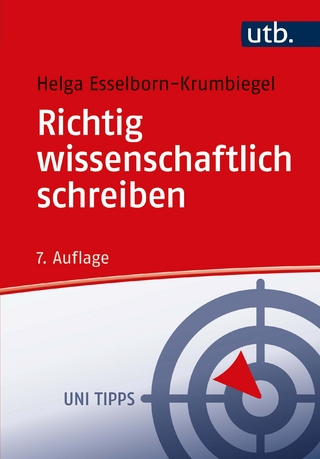
Teaching Carbon Neutral Design in North America
Routledge (Verlag)
978-1-032-69254-8 (ISBN)
- Noch nicht erschienen (ca. März 2025)
- Versandkostenfrei innerhalb Deutschlands
- Auch auf Rechnung
- Verfügbarkeit in der Filiale vor Ort prüfen
- Artikel merken
Award-winning professors detail tried-and-tested studio methodologies, outlining their philosophical rationale, the role of precedent study, design concept and professional partnerships, the approach to analytics and software design development, required readings, assignment and student work examples, and anticipated future innovation. Chapters are grouped under varying focal points including community empowerment, bioclimatic response, performance analytics, design build, and the urban scale, all adopting a holistic view of sustainable design that incorporates technical challenges as well as those of equity and social justice.
This heterogenous compilation of strategies encourages wide accessibility to and acceptance by studio professors, as well as administrators and faculty developing architecture curricula. This will, in turn, maximize the impact on curtailing carbon emissions resulting from the construction and operations of our built environment.
Robin Z. Puttock, AIA, LEED AP BD+C, WELL AP is an Assistant Professor at Kennesaw State University and a practicing architect with twenty years of professional, national award-winning, sustainable design experience. Robin’s research focuses on the pedagogy related to the built environment’s role in both carbon neutrality and human well-being, with an emphasis on the connection between academia and the allied professions. She is the project architect of many LEED certified buildings and the first US Department of Education Green Ribbon School recognized by President Barack Obama and the US Department of Education. Robin serves as the 2025 chair of the National AIA Committee on the Environment (COTE) Leadership Group.
Part 1: Community Empowerment 1. The Net-Zero Vertical Design Studio: A Framework for Design Excellence 2. The Building as a Teaching Tool for Science, Technology, Engineering, Architecture, and Math (STEAM) 3. Integrated and Interdisciplinary Design Education for Net-Zero Energy Buildings 4. Expanding Equity and Empowering Communities: Lessons from the Field 5. Building Decarbonization: Theory to Practice Part 2: Bioclimatic Response 6. Integrating Climate-based Passive Design Strategies into Studio Pedagogy Towards Sustainable Net-Zero Carbon Buildings 7. The Bioclimatic Design Studio 8. A Physical Ambiences Approach to the Assessment and Representation of Carbon Neutral Architecture 9. Environmental Building Design (EBD) Research Studio: Design Innovation for the Climate Emergency Part 3: Performance Analytics 10. A Radically Transformative Student-Centered Approach to the Design of Net-Zero Building 11. Introduction to Conceptual Design Performance Analysis for Carbon Neutrality 12. Reuse Studio: Approaching a Carbon Neutral Future through Extending the Life of Existing Buildings 13. Ha/f Research Studio & Seminar 14. Boxes and Doxa: Learning from the Solar Decathlon Design Challenge Part 4: Design Build 15. Building on Research; A Hands-On Approach to Architectural Education 16. Leveraging the Solar Decathlon Competition as a Framework for a Comprehensive, Community Engaged, Carbon Neutral Architecture Studio 17. Timber Tectonics in the Digital Age Part 5: Urban Scale 18. An Industrial-Urban Synthesis: Planning Education for a Carbon Neutral Future 19. Computational Urban Design: A Simulation and Data-driven Approach to Designing a Sustainable Built Environment 20. Decarbonizing Curriculum through Environmental Stewardship and Experiential Learning
| Erscheint lt. Verlag | 14.3.2025 |
|---|---|
| Zusatzinfo | 21 Line drawings, black and white; 27 Halftones, color; 105 Halftones, black and white; 27 Illustrations, color; 126 Illustrations, black and white |
| Verlagsort | London |
| Sprache | englisch |
| Maße | 156 x 234 mm |
| Themenwelt | Sozialwissenschaften ► Pädagogik |
| Technik ► Architektur | |
| Technik ► Bauwesen | |
| ISBN-10 | 1-032-69254-5 / 1032692545 |
| ISBN-13 | 978-1-032-69254-8 / 9781032692548 |
| Zustand | Neuware |
| Informationen gemäß Produktsicherheitsverordnung (GPSR) | |
| Haben Sie eine Frage zum Produkt? |
aus dem Bereich


